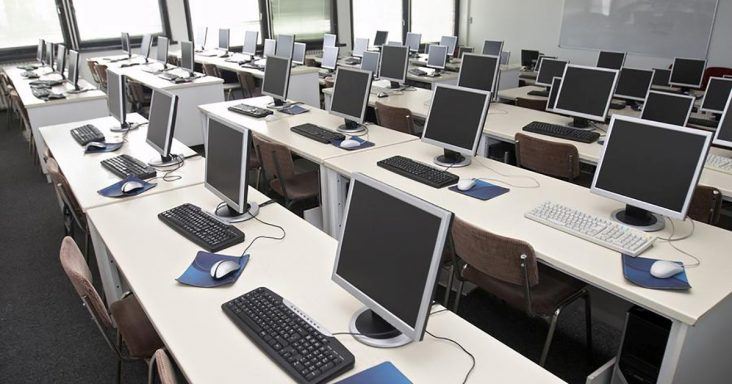Arkansas educators address purported gap between technology and teacher training
by July 24, 2017 1:57 pm 321 views

Education Week published in June a report that says technology is flooding into K-12 classrooms, but many teachers don’t have the adequate training to integrate it into instruction.
The magazine’s annual Classroom Technology: Where Schools Stand report also shows a lack of internet speed and connectivity consistency at schools in some states, but not Arkansas.
In 2016, Arkansas was one of 21 states with 90-99% of school districts meeting the Federal Communications Commission’s minimum internet-connectivity target of 100 kbps per student.
In terms of tech prevalence and teacher prep for that technology, the report shows tech is on the rise.
Mobile devices in classrooms have increased 363% since 2010, according to the report. About 14 million mobile devices — including tablets, laptops, netbooks and Chromebooks — were shipped to K-12 schools in the U.S. during the past year.
The number of fourth- and eighth-graders who reported using a computer in math class at least once every few weeks increased steadily between 2005 and 2015, to 58% and 41%, respectively.
However, the percentage of eighth-grade reading teachers who said they did not have training on how to integrate tech into their classroom instruction remained flat at 21% between 2009 and 2015, according to the report.
More than 60% of students had reading teachers who said they had received training on the subject. That’s 3% less than in 2009. However, the difference is made up in the number of teachers who say they were already proficient in those areas, according to the Education Week.
Nationally, according to the surveys, most 8th-grade math students had teachers who reported that they had learned at least some skills from professional development on the integration of technology into instruction. About 13% said they learned a lot, 40% said they learned a small amount and 15% said they learned none at all.
In Arkansas, 11% said they learned a lot from professional development on the integration of technology into instruction, 39% said they learned a moderate amount on the subject from professional development efforts, 38% said they earned a little and 13% said they did not learn from training at all.
STATE REACTION
On a statewide level, positive changes have been made in teacher tech training during the last few years, according to the Arkansas Department of Education.
Arkansas teachers were only required to take six hours annually of instructional technology before 2013. Now, “instructional technology has been integrated into all state-sponsored professional learning opportunities,” said Kimberly Friedman, director of communications at ADE.
“Additionally, Arkansas educators have the opportunity to engage in online personalized professional development through ArkansasIDEAS and now by utilizing micro-credentialing through Bloomboard to enhance their instructional technology capacity,” Friedman said.
Approved programs for individuals to become teachers must meet criteria that includes knowledge and use of educational technology, she added.
Higher ed programs also must show how their programs align to the national standards from the International Society for Technology in Education, and programs must maintain Council for the Accreditation of Educator Preparation accreditation in which technology is one of two cross-cutting themes embedded in each aspect of the five CAEP standards, Friedman said.
DISTRICT EFFORTS
“Our district does a pretty good job ensuring the training is in place with the technology,” said Misty Doyle, district school improvement specialist for the Jonesboro School District.
For several years, the district has employed technology instructional facilitators, whose job is to help teachers and administrators use technology. They collaborate with them on potential uses for different platforms and programs.
“Any time a teacher has a need, they can go to them,” Doyle said.
If, for example, a teacher were interested in implementing Google Classroom but didn’t know where to start, a facilitator would guide him or her through the process. If several teachers were interested in using or learning more about a technology, the facilitator might put together an after-school professional development course on the subject, Doyle said.
Another option is to train a teacher to become well-versed in a particular type of technology and allow that teacher to instruct others’ on the subject, she added.
The coaches might also identify for the teachers potential resources and grants for tech-related programs and equipment.
In her previous role as a school principal, Doyle said the tech coach helped her set up a communication platform for her to use with teachers.
The district employs two technology facilitators at the elementary level and one at the secondary level, and the district science coach also helps with the program, she said.
The district also hold regular tech expos for teachers to share ideas within the district on how they are using tech in the classroom.
“It’s a neat piece,” Doyle said. “I’m very pleased as far as where we are with the district and the training that has come with the technology.”
Little Rock School District Superintendent Michael Poore said student engagement is always key to ensuring students perform better.
That hasn’t changed in the last 30 years since Poore started his education career, he said, though some things have. “They weren’t using iPads or cellphones back then,” he said.
Now, the district is moving toward the idea that a sixth-grade or 12th-grade classroom “should look more like elementary rooms,” Poore said. Students are broken into groups, there is an extra instructor in the room — whether classified or certified — helping students that are behind or working with students who would like to work ahead.
“We can always do more professional development to enrich things and to move the needle and get the most bang for your buck,” Poore said.
